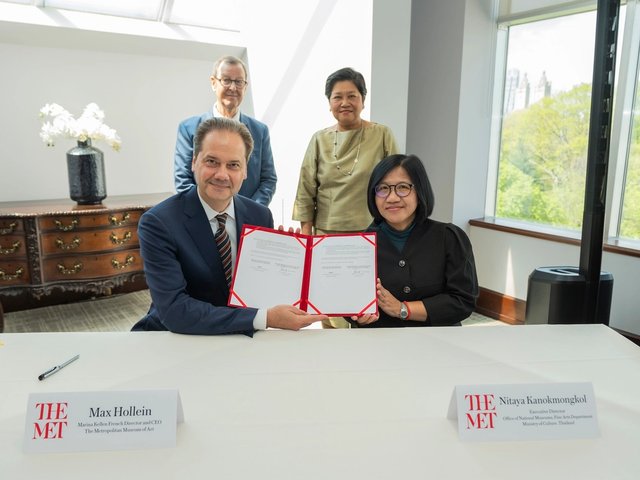The Art Institute of Chicago (AIC) has initiated the return of a rectangular column fragment to the Kingdom of Thailand. The object, a pilaster or door-frame column, dates to the 12th century, and despite previous attribution to Cambodia, has been identified through new research as a former part of the Phanom Rung temple in northeast Thailand.
The AIC returned another artefact from the same temple in 1988—the Vishnu lintel, a supportive beam that spans doors or windows. After more information was gathered on the origin of the pilaster, the museum contacted the Thai government to facilitate its return.
“We are grateful for our close collaboration with the Fine Arts Department in Thailand and are honoured to take this step in what I hope is a long and productive partnership,” James Rondeau, the AIC's president and director, said in a statement. “We are deeply committed to fostering an ongoing relationship and continuing to learn from each other.”
The red sandstone fragment depicts the Hindu deity Krishna lifting Mount Govardhana, a sacred site in the north Indian state of Uttar Pradesh. According to scripture, Krishna saved the hill and the villagers living in its valley from a flood. The Phanom Rung temple, an archaeological marvel at the crest of a historical park, was built on the rim of an extinct volcano and is considered one of the most important monuments in Thailand built by the Khmer people, an ethnic group native to present-day Cambodia.
“This act serves as a model for ethical collecting practices and strengthens the bonds of cultural respect and collaboration between Thailand and the Art Institute of Chicago,” Phnombootra Chandrajoti, director-general of Thailand’s Fine Arts Department, said in a statement. “This valuable artefact is from one of the most significant archaeological sites in Thailand and we are glad it is returning to its motherland.”
The AIC is currently embroiled in a battle over the restitution of an Egon Schiele drawing to the heirs of Austrian Jewish collector Fritz Grünbaum. The museum insists that the drawing was not a Nazi-looted artefact, as the heirs claim, but was instead gifted by Grünbaum to his sister-in-law, who then sold it to the museum.





